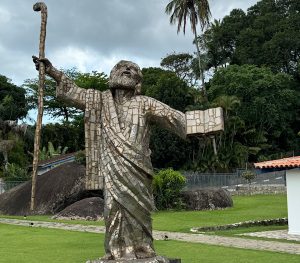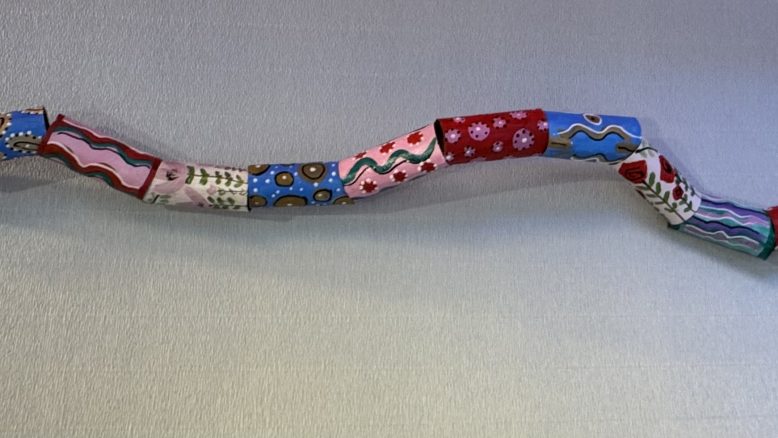In an exhibit in the city hall gallery in Ilhabela Brazil, there is a gnarly serpent crafted from brightly (seductively attractive, Eve) pattern-painted toilet-paper rolls. The novelty of the rolls rolled into a snake was striking, almost visually venomous! The brightly coloured patterns helped create an attractive snake, a seductive snake, a snake kids would play with. In the city of Ilhabela the caiçara culture of artisanal fishing and subsistence farming merge into a single English word: coastal people. Original peoples unwinding the rolls of their lifestyles to discover a garden of hope.
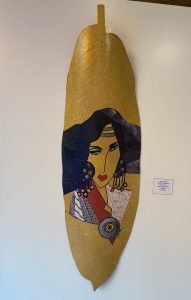
Leaves of Grass, written by Whitman in 1855 captures the roll of the “blade” in nature in carrying life to fruition. The painting on the tropical leaf captures the hidden potential embedded in life cycles. Martha Sabdala captures mystery and the chromatic blessing of the moon escape in the colour rich clouds. These works speak to a whole new world coloured by the integration of the organic with the offal of development.
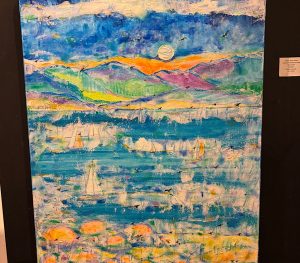
In a larger than life scale the sculpturer, Gilmar Pina created a crucifix that depicts Jesus as the bionic person, or as a medical parts bank. The artist’s subscript notes the work of musician Mina Alhama and hints at his lyric lines,”my soul is armed and dangerous.” The crucifix questions and asserts. The most astonishing moment for me was seeing the crucifix elevated from a suffering servant to the bionic leader of the angel armies.
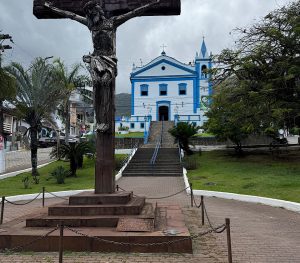
In front of city hall the same sculpture captures Moses coming from the clouds with his parting staff. Somehow the tablets of stone and the empty toilet rolls have become empty symbols in our time. There is power in an armed and dangerous soul. There is power in an empty roll.
